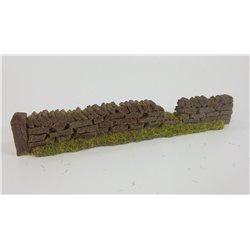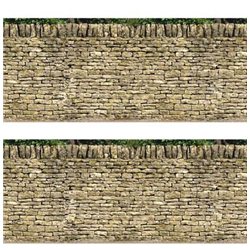Resin and plastic are two common materials used for creating models, but they have distinct characteristics and...
No products
Product successfully added to your shopping cart
There are 0 items in your cart. There is 1 item in your cart.
Search Tips
Christmas and New Year
We are dispatching orders every weekday apart from Christmas Day, Boxing Day and New Year's Day.
If you order is time critical, select next day delivery at checkout.
The shop in Sandown is closed from 25th December, reopening on 30th December.
What are my options for modelling a dry stone wall on my layout?
There are a number of options available to modellers wishing to create a dry stone wall on their layouts.
Firstly, many manufacturers produce detailed and realistic-looking dry stone wall segments for use in layouts. These can be quickly added to a layout to create the desired effect. Although highly realistic, these items may not always be a good fit on all layouts, as the wall segments generally tend to be straight and level they may not work on all layouts, especially those with non-straight walls and those with uneven terrain.
Alternatively, it is possible to scratch-build the basic structure of the wall using a base material such as foam board or polystyrene. Then, add texture to the surface of the material to resemble the rough, uneven surface of a dry stone wall. This can be achieved using techniques such as stippling with a brush or sponge, using textured paint or paste or a combination of both of these methods.
Next, it is also possible to add individual stones to the wall. For this, a modeller can use a variety of materials such as individual stones made of plaster, resin or plastic, or even real stones that have been collected and washed. Simply apply these stones to the surface of the wall using a strong adhesive such as PVA glue or epoxy.
To add even more realism to the dry stone wall, add details such as lichen, moss or grass tufts. These can be added using small amounts of flock, static grass or other textured materials and can help to make the wall look more natural and organic.
Finally, it's important to consider the placement of the dry stone wall on the layout. Walls are often used to define boundaries between different areas of the layout, such as fields or villages. They can also be used to create retaining walls or to add interest to hillsides or other terrain features.
Overall, by using a combination of techniques and materials, it is possible for a modeller to create a realistic and visually striking dry stone wall on their layout.
Click here to receive the tips weekly in your mailbox. You can unsubscribe at any time.










